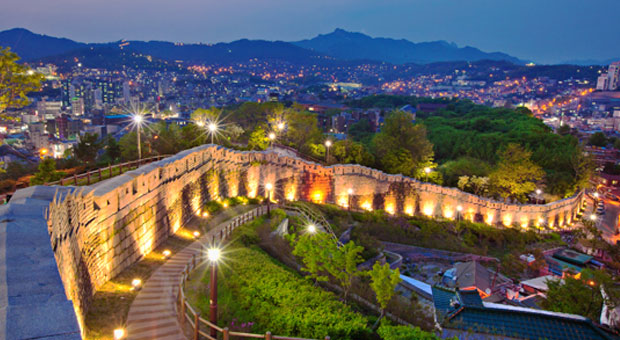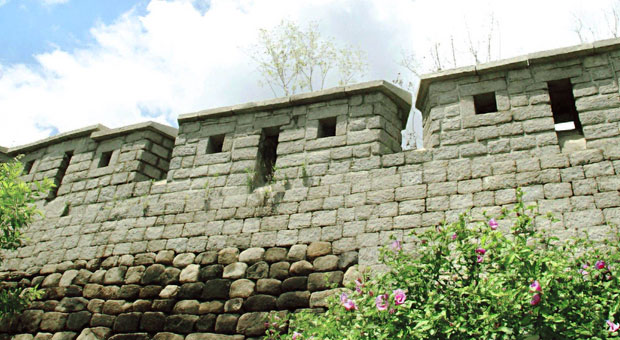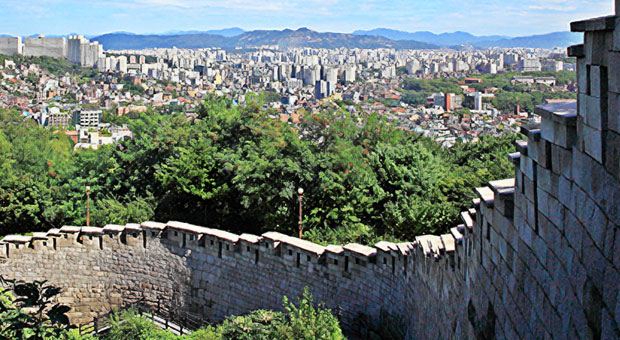Hanyangdoseong, the Seoul City Wall
Hanyangdoseong (Seoul City Wall)
A cultural heritage site embodying 600 years of history (Historic Site No. 10).
- Website seoulcitywall.seoul.go.kr



Location : San 1-3 Nusang-dong, Jongno-gu, Seoul(Jongno-gu, Seongbuk-gu, Jung-gu, Yongsan-gu, Seodaemun-gu)
View Map
The Hanyangdoseong (Seoul City Wall) was built to demarcate the boundaries of Hanyang, the capital of the Joseon dynasty, asserting its authority and protecting it from external invasions. Constructed in 1396 (5th year of King Taejo’s reign), the wall follows the ridgelines of Baegak (Bukaksan), Nakta (Naksan), Mokmyeok (Namsan), and Inwang, known as the inner four mountains. It underwent multiple reconstructions over time. The wall stands approximately 5 to 8 meters high on average, with a total length of about 18.6 kilometers. It holds the distinction of being the longest-serving city wall (1396–1910, 514 years) still in existence worldwide. The Hanyangdoseong had four main gates and four auxiliary gates. The four main gates are Heunginjimun, Donuimun, Sungnyemun, and Sukjeongmun, while the four auxiliary gates are Hyehwamun, Soeimun, Gwanghuimun, and Changuimun. Among these, Donuimun and Soeimun no longer exist. Additionally, Ogansumun and Igansumun were built near Heunginjimun to connect the water flow outside the city.
Initially, flat areas of the wall were made of earth, while mountainous sections were built using stone. During King Sejong’s reign, the earthen sections were reconstructed using stone. Some stones in the wall were inscribed with records of the construction, marking sections and responsible military units during King Taejo and King Sejong’s time, and including the names of supervisors, technicians, and dates after King Sukjong’s era to indicate accountability.
Despite losing much of its original form during modernization, Hanyang City Wall began restoration starting from Sukjeongmun in 1968, with rebuilding efforts expanding to the entire wall by 1974.

